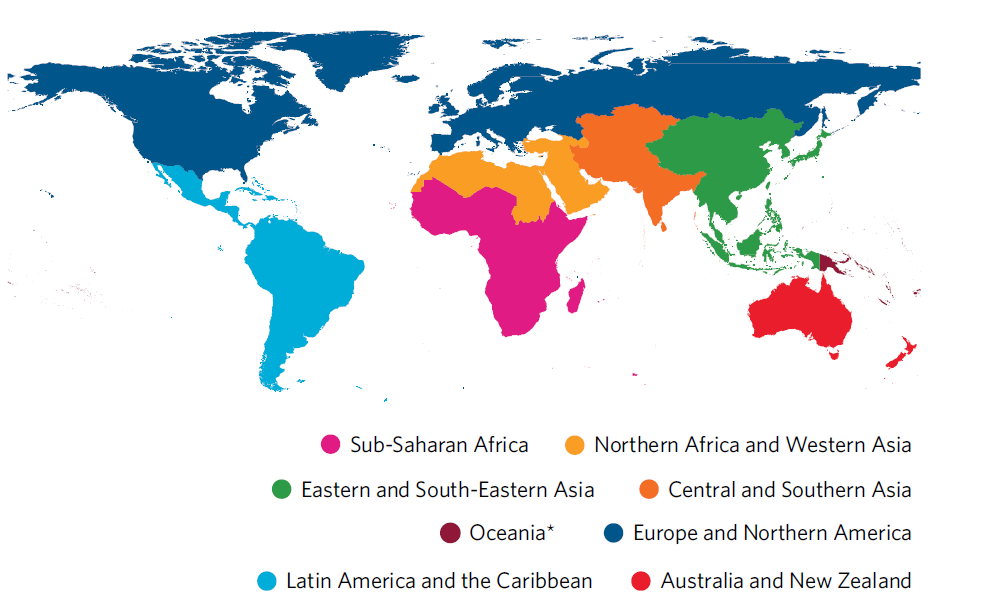Note to the reader
Global indicator framework for the follow-up and review of the Sustainable Development Goals
The information presented in this report is based on the latest available data (as of June 2023) on selected indicators in the global indicator framework1 for the Sustainable Development Goals. The global indicator framework is used to review progress at the global level and was developed by the Inter-Agency and Expert Group on SDG Indicators (IAEG-SDGs) and adopted by the General Assembly on 6 July 2017 (see resolution 71/313, annex). The choice of indicators used in the report does not represent a prioritization of targets, since all goals and targets are equally important.
Data sources
The values for most of the indicators presented in the report are regional and/or subregional aggregates. In general, the figures are weighted averages, using the reference population as a weight, of national data produced by national statistical systems and calculated by international agencies with specialized mandates. The national data are often adjusted for comparability and, where lacking, are estimated. As decided by the United Nations Statistical Commission and in accordance with Economic and Social Council resolution 2006/6, estimates used to compile the global indicators should be produced in full consultation with national statistical authorities. The criteria and mechanisms for validation by national statistical authorities are outlined in the report of the IAEG-SDGs2 and were endorsed by the Statistical Commission at its fiftieth session. 3
Although the aggregate figures presented here are a convenient way to track progress, the situation of individual countries within a given region, and across population groups and geographical areas within a country, may vary significantly from regional averages. Presenting aggregate figures for all regions also obscures another reality: the lack, in many parts of the world, of adequate data to assess national trends and to inform and monitor the implementation of development policies.
A database of available global, regional and country data and metadata for the SDG indicators accompanying this report is maintained by the United Nations Department of Economic and Social Statistics Division and is available at https://unstats.un.org/sdgs. Owing to the emergence of new data and revised methodologies, data series presented in this report may not be comparable with previous data series.
Regional groupings
This report presents data on progress made towards achieving the SDGs worldwide and by various regional groups. The country groupings are based on the geographic regions defined in the Standard Country or Area Codes for Statistical Use (known as M49)4 of the United Nations Statistics Division. The geographic regions are shown on the map on the right. For the purpose of presentation, some of the M49 regions have been combined.
The use of geographic regions as the basis for country groupings is a major change from The Sustainable Development Goals Report 2016 and the progress reports on the Millennium Development Goals. Previously, data were presented for countries in "developed" and "developing" regions, which were further broken down into geographic subregions. Although there is no established convention for the designation of "developed" and "developing" countries or areas in the United Nations system, data for some indicators in this report are still being presented for developed and developing regions and countries for the purpose of statistical analysis only, and are based on the practice employed by the international agencies that provided the data.5.
The text and figures present, to the extent possible, data for least developed countries, landlocked developing countries and small island developing States, which are country groups requiring special attention
A complete list of countries included in each region and subregion and country
https://unstats.un.org/sdgs/indicators/regional-groups/.
The term "country" used in this report also refers, as appropriate, to territories and areas. The designations employed and the presentation of the material in this report do not imply the expression of any opinion whatsoever on the part of the United Nations Secretariat concerning the legal status of any country, territory, city or area or of its authorities, or concerning the delimitation of its frontiers or boundaries
